Jelsa Becomes the First International Dark Sky Community in Southern Europe
February 28th, 2022 - With its dark night sky now officially certified, the town on Hvar island is set to become a notable astrotourism destination
We recently reported that considerable efforts were being made on Hvar island to decrease light pollution, as part of Jelsa Municipality’s bid to become an International Dark Sky Community.
The International Dark-Sky Association (IDA) has now granted the coveted title to Jelsa, making it the first International Dark Sky Community in Croatia and southern Europe. Jelsa is also the 37th local self-government unit in the world to bear the prestigious title, reports Morski.hr.
The International Dark Sky Community is a title given to local communities that have shown outstanding commitment to dark sky conservation through the implementation of lighting policies, education on dark sky conservation, and citizen support for the initiative.
‘Jelsa Municipality has set a high standard that should be followed by other local governments in your country and this region of the world. We’re honoured to bring attention to Jelsa as a prominent leader in setting an example of how the proper use of lighting benefits people's well-being, as well as the night environment in our communities and beyond’, said the International Night Sky Protection Programme Director Ashley Wilson.
The process of declaring Jelsa an International Dark Sky Community was set in motion by the Jelsa Tourist Board Director Marija Marjan, and the procedure and activities related to the bid were managed by the Croatian Astronomical Union. In the past two years, the municipality has swapped 82% of its unprotected public lighting for fully protected 3000K lighting in accordance with IDA requirements.
The project was implemented over the course of a year, and it involved numerous activities ranging from public telescope observations, lectures, exhibitions, events and astronomy schools for elementary school students to the development of a five-year work plan and environmental lighting guidelines.
Jelsa’s bid was submitted in December last year, and once the additional conditions required by the IDA were fulfilled, the municipality was granted the title of an International Dark Sky Community.
The International Dark Sky Places is an initiative launched in 2001 as a non-regulatory and voluntary programme meant to encourage communities, parks and protected areas around the world to preserve and protect the natural night sky through the adoption of effective lighting policies, environmentally responsible outdoor lighting, and education.
‘Careless use of artificial lighting can disrupt entire ecosystems, have an adverse effect on human health, unnecessarily waste money and energy, considerably contribute to climate change, and obstruct our view and connection to the universe we live in. Jelsa joins the international community of more than 195 protected areas that have made exceptional contributions to the protection of the dark sky from light pollution, and is well on its way to becoming the first serious destination for astrotourism in Croatia’, stated Jelsa Tourist Board.
Places that are known for dark night skies, especially those destinations that have received official certification in this regard, are extremely rare and attract amateur astronomers from all over the world. Citizens of countries that are struggling with light pollution, such as Germany, France, Spain and Italy, constantly seek out locations that will allow them to enjoy the dark night skies.
A Croatian island now joins the list of such locations, with Jelsa officially certified as an ideal location for night sky watching. As such, it will surely attract a new group of tourists, who will no longer have to travel to the Canary Islands to gaze at the night sky.
Astronomy Days Celebrated With Jelsa's Clear Night Sky
June 16, 2021 - The first Croatian town to join the International Dark Sky Community continues to prove that its clear, star-filled sky continues to rank it as one of the top astrotourism destinations, with Jelsa celebrating its Astronomy Days from June 10th to 14th.
In cooperation with the Croatian Astronomical Association, the Jelsa Tourist Board, and the Leo Brenner Astronomical Society, the Astronomy Days were organized in Jelsa between June 10th and 14th, which is another step of Jelsa towards the development of astrotourism, reports Turističke priče. As part of the program, primary school children learned how to observe the sun with telescopes, but also everything about the stars and light pollution. The workshops introduced the children to the most important constellations and the brightest stars currently seen in the sky, as well as the problem of light pollution, like the reason why we are missing stars.
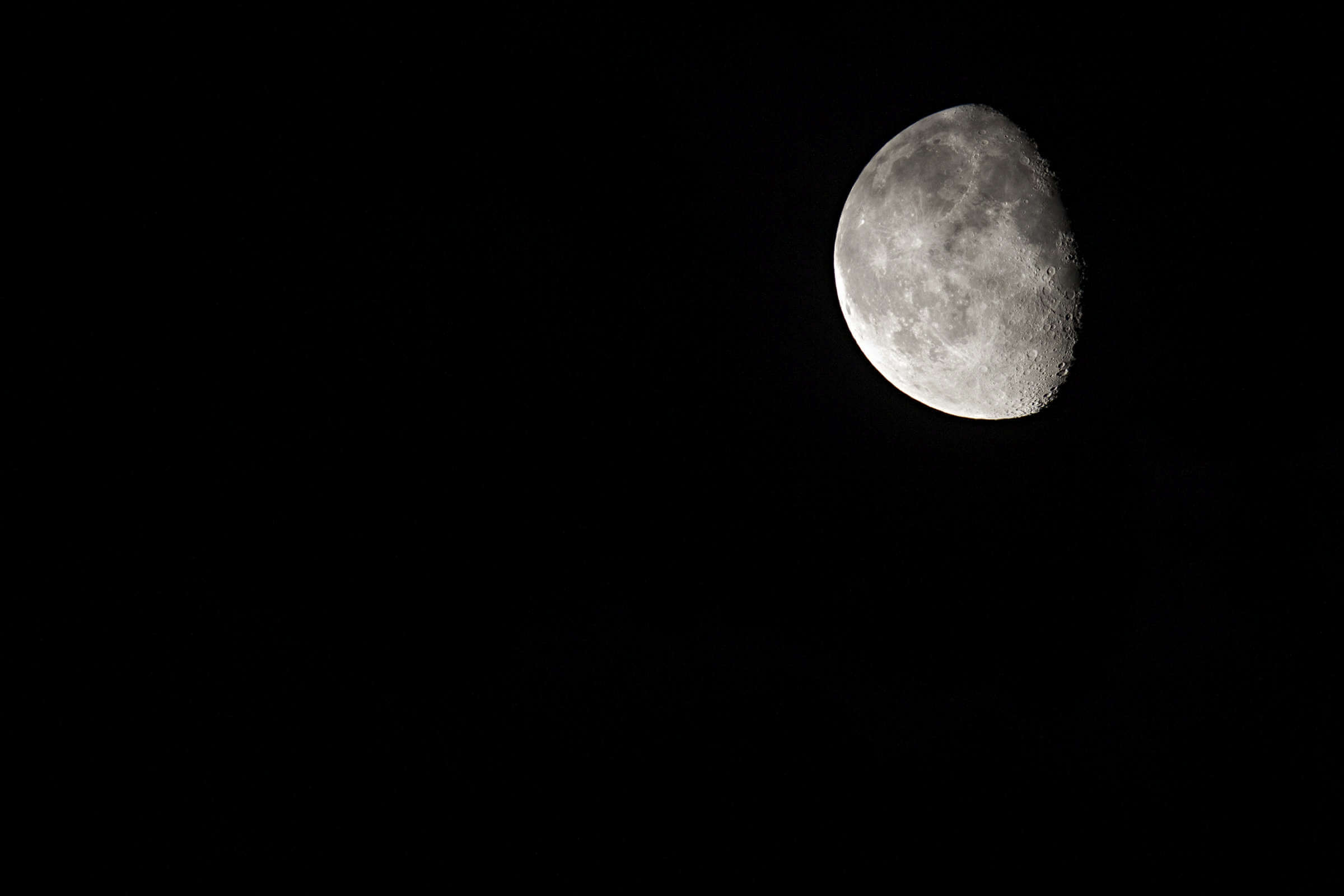
Participants were able to take a photo of the moon with their own smartphones (Credit: Mario Romulić)
The stars will be the brightest tourist product of Jelsa, which should acquire the status of the International Dark-Sky Community by the end of the year and become the first municipality/city in Croatia to proudly bear that title. This title confirms Jelsa as a destination that has an exceptional quality of the night sky and respects high environmental standards in terms of light pollution, which together make a big step towards creating an astro-tourist offer in the area of Jelsa.
In addition to workshops for children in Jelsa, public observations with telescopes for citizens and tourists were organized as part of Astronomy Days. The astronomical evening in Zavala and the Moon from Zastražišće attracted visitors, and on both observations, apart from looking through the telescope, it was possible to photograph the moon with your own smartphone through the telescope, so many took with them a fond memory.
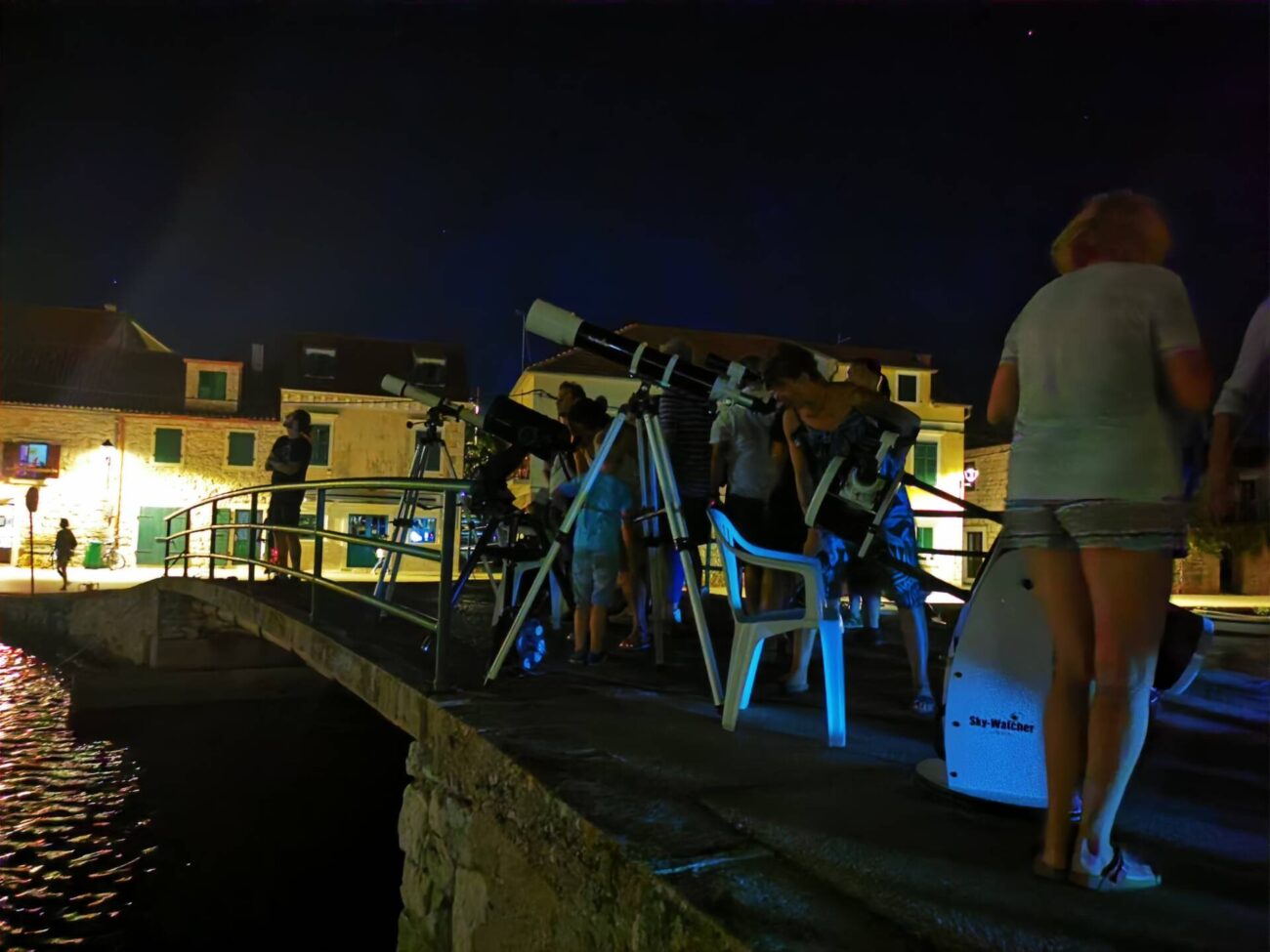
Participants of the Astronomy Days in Jelsa (Credit: Jelsa Tourist Board)
Jelsa was the first to develop astrotourism
Secretary-General of the Croatian Astronomical Union Dorian Božičević in Jelsa serviced the cameras of the Croatian Meteor Network located in the Eco-ethno village Humac and continued with measurements of light pollution in the Municipality of Jelsa, which is soon preparing to submit an application to the International Night Sky Association (IDA) for obtaining the status of the International Dark Sky Community, reported from the Croatian Astronomical Union, announcing that they expect to receive the status by the end of the year.
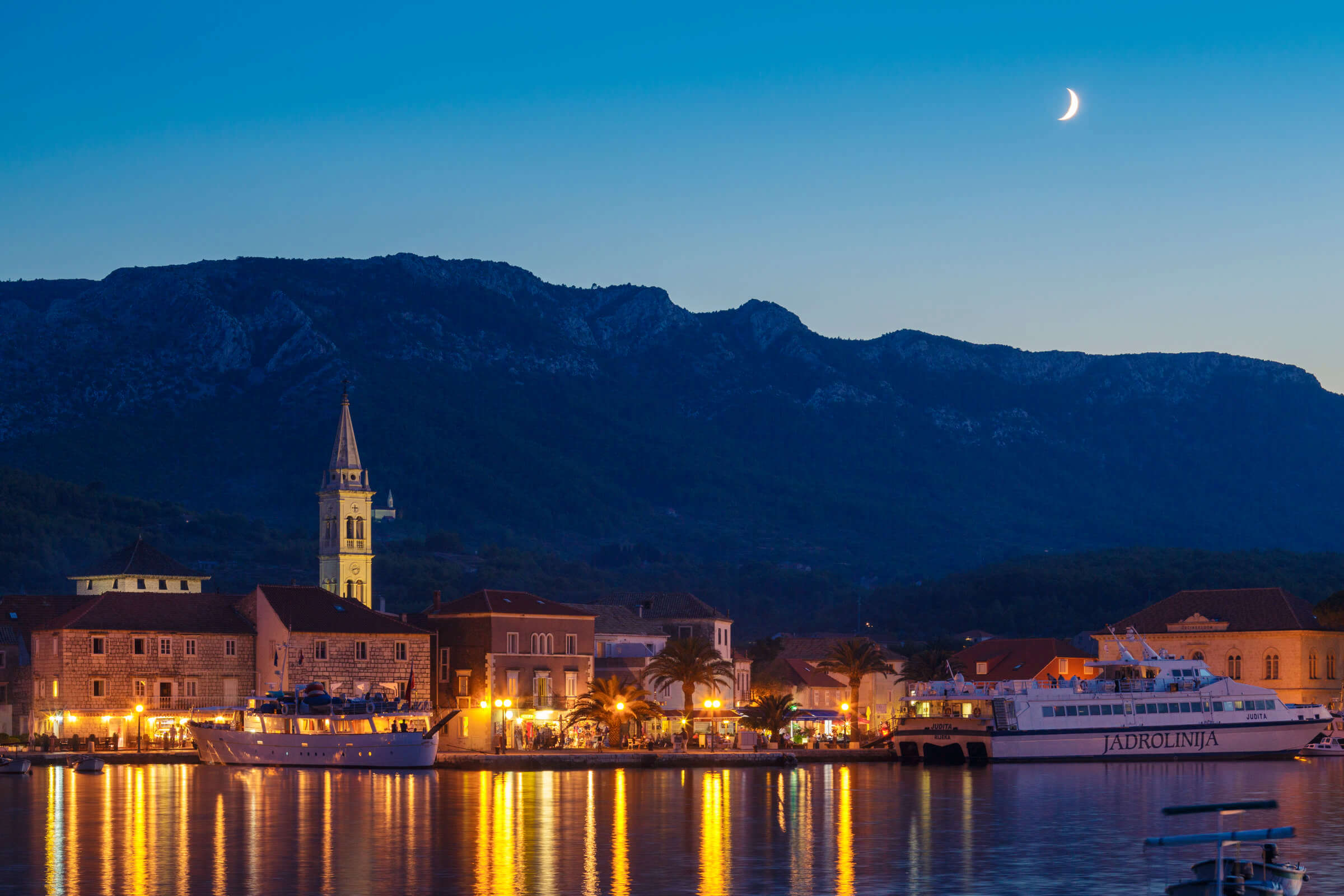
The town of Jelsa at night (Credit: Mario Romulić)
In addition to the sun and the sea, Jelsa will also offer tourists a starry sky, and the stars in modern times are disappearing precisely because of light pollution, and observing the starry sky is becoming a tourist attraction that you cannot often see.
What is the International Dark Sky Community?
Unlike the park, the dark sky community is a village, town, municipality, and other legally recognized communities that have shown exceptional commitment to preserving the dark sky through the implementation of quality outdoor lighting and raising awareness of light pollution. Namely, in 2001, the International Organization of the Dark Sky launched the "International Dark Sky Locations" program. The program recognizes and aims to protect areas around the world with preserved and natural dark skies, ie without or with a minimum amount of light pollution.
Jelsa is a slice of safe, authentic lifestyle heaven on Croatia’s premier island, with wine and beach treasures galore. Everything you need to know about Jelsa, you'll find it in our Total Croatia's Jelsa on a Page HERE.
Follow the latest travel updates and COVID-19 news from Croatia HERE.
For more on travel in Croatia, follow TCN's dedicated page.
Astro Tourism on Hvar: Jelsa To Be First Dark Sky Community in Croatia
December 27, 2020 – In an effort to develop astro tourism on Hvar, a meteor camera and meteorological station were set up in the abandoned settlement of Humac near Jelsa. Jelsa will thus become the first internationally recognized Dark Sky Community in Croatia.
As Turističke priče reports, the Municipality of Jelsa, the Tourist Board of Jelsa, and the Croatian Astronomical Society participate in creating an astro-tourist offer on the island of Hvar.
Meteor camera recorded 125 meteors in the first night
The first activity, public observation with a telescope, was carried out in August. Later, a small school of astronomy was organized for primary school students.
Now the Croatian meteor camera (i.e., the Global Meteorological Network) and the meteorological station on Humac have been completed. The work was quite demanding because first, a pole, solar power supply, and mobile internet had to be installed, then a meteor camera and meteorological station.
The meteor camera recorded 125 meteors on the first night of filming, of which 72 belonged to seven known meteor swarms. The most numerous were meteors from the radiant in Coma Berenices, 12 in total.
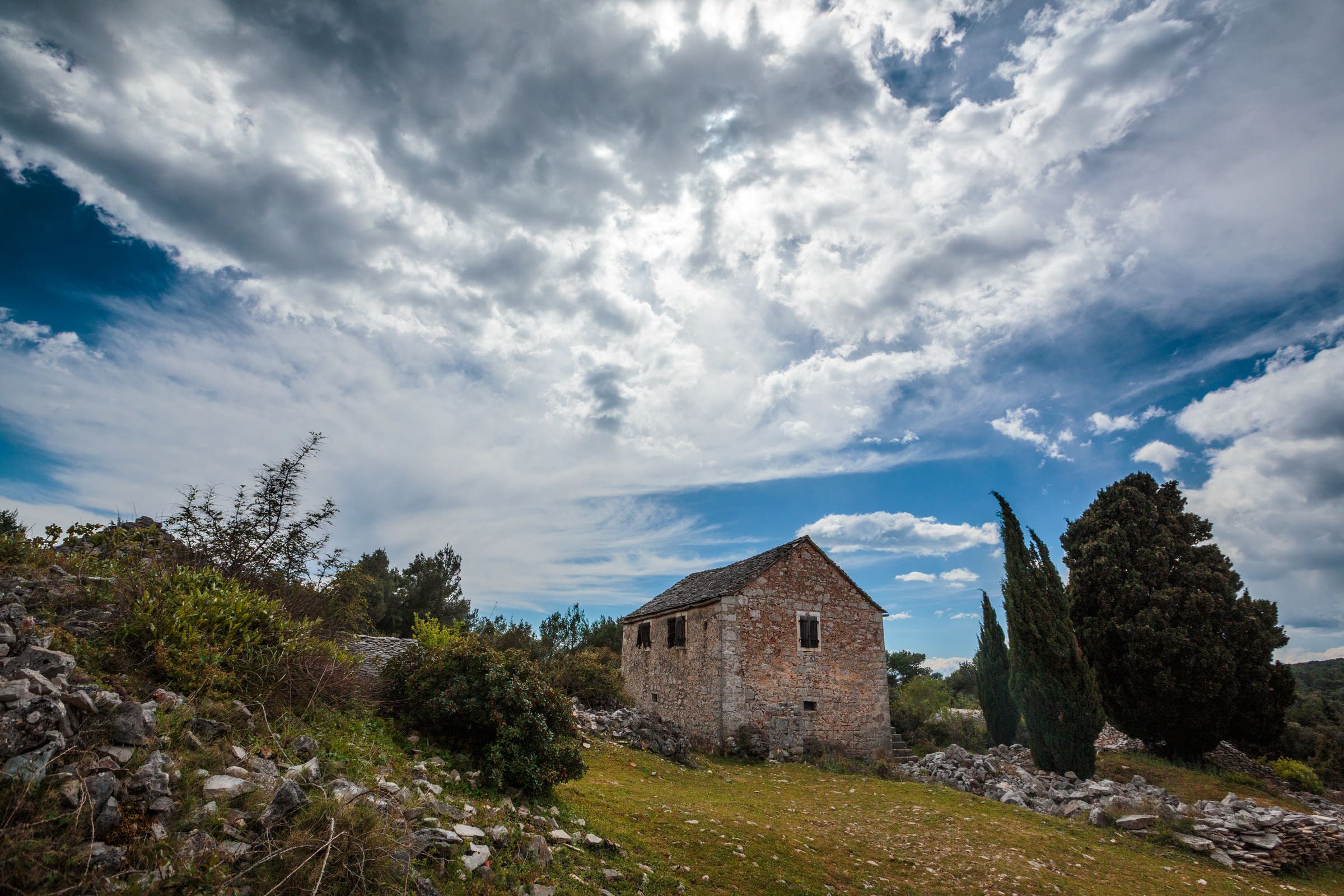
Humac is a former pastoral settlement, founded in the 17th century, located 7 km away from Jelsa, at 350 m above sea level / Photo: Romulić and Stojčić
The meteor camera in Humac can be followed on the pages of the Global Meteor Network, and the meteorological station on the Weather Underground and Weather Cloud services.
Activities are also aimed at declaring the Municipality of Jelsa the first international Dark Sky Community in Croatia and the area of Humac an International Dark Sky Park.
What is Dark Sky Park, and what Dark Sky Community?
The Dark Sky Park label is awarded to protected nature areas with extremely dark skies full of stars. According to the International Dark-Sky Association, an American non-profit organization, parks are spaces protected for natural conservation that implement good outdoor lighting and provide dark sky programs for visitors. The parks also run programs to popularize astronomy, educate the public on light pollution, and actively promote and preserve the night sky for current and future generations.
In Croatia, the first International Dark Sky Park is the one on Petrova Gora. Unfortunately, its future is questionable due to the light pollution caused by the tower with intense lighting, set up at the same location. At the end of last year, Vrani Kamen on Papuk was declared a second International Dark Sky Park. It is expected that the area of Humac near Jelsa on Hvar will be the third Dark Sky Park in Croatia.
Unlike the park, the Dark Sky Community represents a village, town, or municipality that has shown exceptional dedication to preserving the night sky by implementation and enforcement of a quality outdoor lighting ordinance, dark sky education, and citizen support of dark skies. Communities excel in promoting responsible lighting and dark sky stewardship and set good examples for surrounding communities.
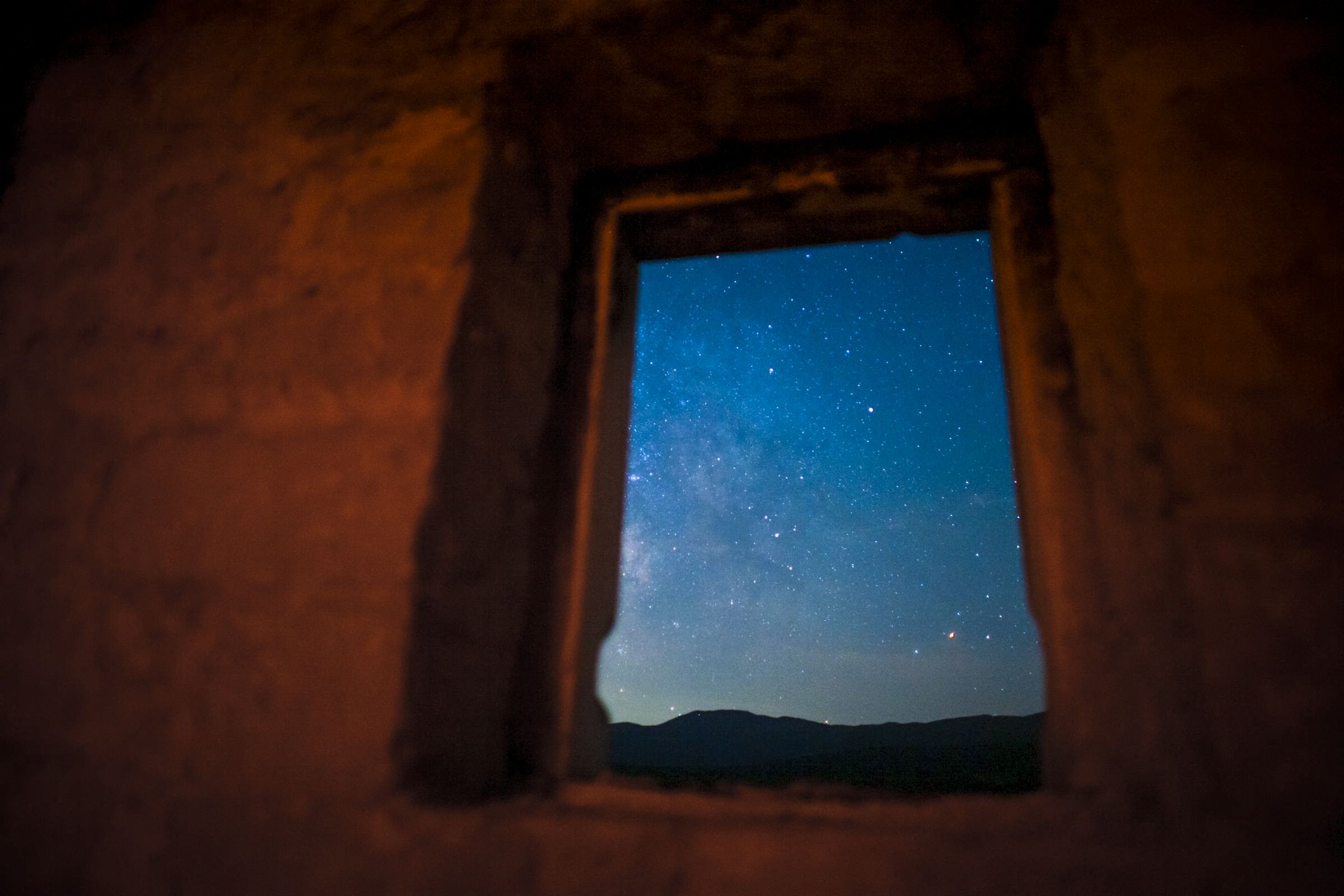
Dark starry Croatian sky / Photo: Romulić and Stojčić
Dark Sky Park as a tourist product?
Astro tourism is not yet developed, but it is one of the fastest-growing branches of tourism.
As HRturizam reports, although it is currently a small global community, dark sky tourism is growing and will only have rapid growth due to the coronavirus pandemic. Lonely Planet, CNN, and many others included dark sky tourism in the upcoming trends back in 2019.
Both Dark Sky Park in Humac and Dark Sky Community in Jelsa are of excellent quality and different tourist products. It is yet to be seen how this story is developed, presented, and sold.
For the latest travel info, bookmark our main travel info article, which is updated daily.
Read the Croatian Travel Update in your language - now available in 24 languages.


